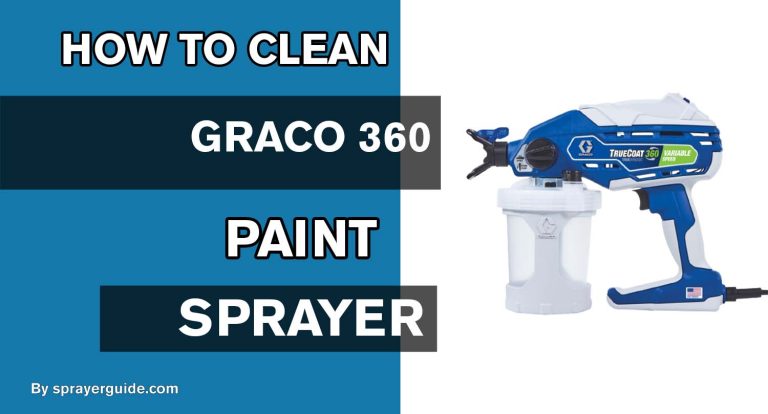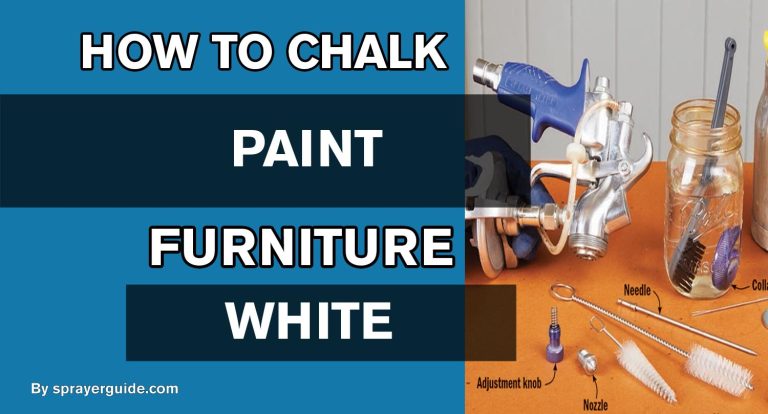If you want to paint your walls quickly and easily, you might want to use a paint sprayer. Before buying one, consider whether it needs more paint than a regular roller. This blog post will explain the differences between painting with a roller and painting with a spray can so that you can choose the right tool for your project. We’ll talk about how the two ways are different and pay close attention to how much paint each uses so that none of the paint is wasted.

Which One Should You Use – A Paint Sprayer Or A Roller?
Ultimately, the choice will depend on the particular job you are trying to complete. Paint sprayers are more suitable for large surfaces, such as walls and ceilings, that must be painted quickly. They also provide a smooth finish with no brush marks and have an adjustable nozzle so you can control the thickness of coverage.
Rollers are beneficial when you want to achieve a textured effect or apply multiple coats of paint. They’re also easy to use and relatively mess-free – perfect for smaller jobs around the home, like doors, furniture, and skirting boards. So while there’s no definitive answer to which is best, it’s worth considering both options before deciding. Ultimately, it comes down to what type of project you’re doing and what kind of finish you want. By viewing the benefits of both tools, you can decide which one best fits your needs.
To sum up, paint sprayers are best for large surfaces that must be painted quickly and evenly with no brush marks. Rollers are better suited for creating a textured effect or applying multiple coats of paint and smaller home improvement projects. Both have advantages and disadvantages – so it’s essential to consider what kind of job you’re doing and the type of finish you want before deciding which one is right for you. With this information in mind, you’ll be able to choose the right tool for the job and get professional results every time.
Advantages of Using a Paint Sprayer:
Speed:
Paint sprayers offer a much faster painting process than traditional brushes and rollers, making them perfect for larger projects or those who need to finish quickly.
Coverage:
Paint sprayers can provide excellent coverage, so you’ll get an even coat of paint without worrying about brush strokes or missed spots.
Accuracy:
You have more control with a paint sprayer, allowing you to precisely target areas that need extra attention and create smooth finishes.
Variety:
Several paint sprayers are available, such as airless, HVLP (high volume, low-pressure), and handheld models – so you’ll surely find one that suits your project.
Versatility:
Paint sprayers can be used for various surfaces and textures, including wood, concrete, brick, plaster, and more.
Efficiency:
With most paint sprayers, you can adjust the speed and pressure settings to suit different types of paint or materials – meaning you’ll be able to finish your project with maximum efficiency.
Professional results:
It is much easier to achieve professional-looking results from painting projects when using a paint sprayer – as it helps reduce drips and runs for a smoother finish.
Low waste:
Paint sprayers are very efficient in their use of paint, compared to traditional methods – which means less wastage of resources and cost savings for you.
Easy cleanup:
Cleaning a paint sprayer is much simpler than cleaning brushes and rollers, so you won’t have to spend as long on the job when it’s finished.
Wide range of uses:
Paint sprayers are suitable for various jobs, from automotive painting to interior decorating – meaning you can use one tool for several projects.
This is a good choice for both newcomers and experienced players. With all of these benefits, it’s no wonder that paint sprayers are becoming increasingly popular.
Advantages of Using a Paint Roller:
Reduced Spreading of Paint onto Unintended Surfaces:
A paint roller ensures that the spreading of paint is limited to the intended area and doesn’t travel onto unintended surfaces like walls or floors.
More accessible, Smoother Application:
Using a roller makes applying an even coat of paint easier without any streaks or lines than brushes, which can leave behind unattractive brush strokes.
Less Messy:
A roller is much less messy than a brush, leaving fewer drips on the painted surface.
Speeds Up Painting Processes:
With its ability to quickly cover large areas with one stroke, a roller is an excellent tool for speeding up the painting process.
Cost Effective:
A roller is much more cost-effective than a brush since it requires fewer strokes and less paint to cover larger areas.
Less Time Consuming:
Paint rollers are great time savers in comparison to other methods of painting because they require less effort and can cover larger surfaces quicker than brushes or spray cans.
Easy Handling and Cleaning:
The handle on a roller makes it easier to apply pressure when necessary, while the easy cleaning process after use makes it ideal for those who don’t want to spend too much time cleaning their tools post-use.
Easier Accessibility:
Paint rollers are lightweight, portable tools that can be easily accessed from any store and come in various sizes to suit different areas with varying needs.
Low Odor:
The odor emitted by paint rollers is significantly less than brushes or spray cans, making them ideal for use indoors and in small spaces where the paint smell could be overpowering using other methods.
Durability:
Paint rollers are made from strong materials lasting for many painting sessions without showing wear and tear. Additionally, they don’t require frequent replacement like brushes do after every few uses.
Does a Paint Sprayer Use More Paint Than a Roller?
Are you considering using a paint sprayer to finish your next remodeling project? It’s understandable why this would be an attractive option. Paint sprayers can produce a smoother, more uniform finish than traditional roller painting and complete the job much faster. However, one potential drawback is that paint sprayers use more material than rollers.
Overspray and a lack of drying time are to blame. Some paint may get on nearby walls, furniture, or floors if you use a sprayer that does not use air. As a result, more finished product is diverted from their intended destination, resulting in increased material waste. Furthermore, because a sprayer reduces the size of the paint particles, the effect takes much longer to dry. It takes longer for the water to evaporate because more of the paint’s surface is exposed to the air.
Despite these factors, many people choose to use a sprayer for their next project if they have one available since this may be the quickest and most efficient method of painting. If you decide to go this route, account for increased material costs and the additional wait time for the paint to dry. Proper preparation can minimize overspray and ensure your project looks great.
Frequently Asked Questions:
The answer to this question depends mainly on the surface you’re painting and the look you’d like to achieve. Paint rollers are better suited for large, flat surfaces, while paint sprayers are more effective when covering intricate details or textured walls. Rolling is ideal for quickly applying uniform coverage of a single color with minimal effort. Spraying works best if you want detailed work in tricky places and to achieve a professional and smooth finish.
Suppose you use a paint sprayer; several types are available, each designed for specific tasks. The most popular models include airless sprayers, HVLP (High Volume, Low Pressure), and air-assisted airless sprayers. Airless sprayers are ideal for larger projects and provide a smooth finish with minimal overspray. HVLP sprayers are best suited for smaller projects as they operate at lower pressures, making them easier to control but requiring more cleanup afterward. Air-assisted airless sprayers combine the advantages of both paint guns, allowing you to achieve a professional finish more quickly on large surfaces.
The amount of paint you’ll need to complete your project depends on the size and type of surface in question. Generally, a gallon of paint can cover approximately 400 square feet when painting with a roller, while spraying typically uses less paint per square foot. To be sure, it’s best to do some calculations before you start so that you purchase the right amount of paint.
Generally, Spraying takes less time than rolling, as it allows you to cover larger areas in one go without constantly reloading a roller or brush. However, this depends on the job’s size and complexity – if there are many intricate details or corners, rolling might be faster. Also, remember that Spraying requires more preparation time and is messier than rolling, so you must factor this into the equation before deciding which method to use.
The cost of paint sprayers can vary significantly depending on the type and size of the unit. In general, paint rollers are much cheaper than sprayers, making them ideal for smaller jobs or those with tight budgets. However, if you plan to do multiple projects over time, it may be worth investing in a good-quality paint sprayer as they tend to last longer and provide better results.
Spraying requires more cleanup than rolling, as overspray needs to be wiped up afterward. The spray gun must also be carefully cleaned and maintained to ensure it works correctly. With rolling, the main concern is ensuring that excess paint has been wiped away from surfaces such as walls, windows, and skirting boards. It’s also important to clean and store your brushes and rollers correctly so they don’t dry out or develop mould.
Conclusion:
Lastly, a roller uses less paint than a sprayer. Sprayers use a finer mist of paint than rollers to put more paint on the wall. It can help paint cover better with fewer coats, but often more coats are needed because of overspray or uneven Application. Also, some paints work better when rolled on, while others may need more than one coat if sprayed on. Before you decide how to paint your project, think about how much it will cost and how long it will take with each method. Both choices have pros and cons that you should consider before making a choice.
Read More:
- How Long Does Primer Spray Paint Take To Dry
- How To Spray Paint Wood Chairs
- How To Thin Water-Based Paint For Roller
- How Long Does Spray Paint Take To Dry Metal
- Is It Better To Spray Or Roll the Interior Paint
- Does A Paint Sprayer Use More Paint Than A Roller
- How To Thin Water-Based Paint For Spraying
- How To Clean Wagner 350 Paint Sprayer
- How To Paint A Textured Ceiling With A Roller
- Which Is Better, Air Or Airless Paint Sprayer
- How To Use Hvlp Spray Gun
- How Long Does Spray Paint Take To Dry On Cardboard
- Graco Magnum Prox17 VS X5






